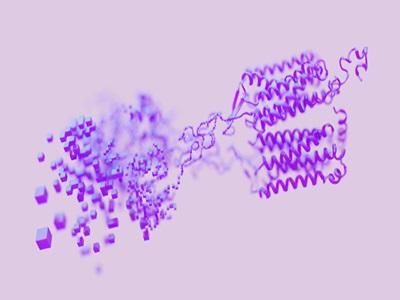Programmable Peptide-Based Metal-Organic Frameworks
This technology leverages structured symmetric cyclic peptides to create advanced metal-organic frameworks, offering enhanced stability and versatility.
What is the Problem?
Metal-Organic Frameworks (MOFs) are critical in various applications, from gas storage to catalysis. However, the design and synthesis of MOFs with desired properties remain challenging due to the limitations of traditional ligands. There is a need for more versatile and stable ligands to construct MOFs with tailored properties.
What is the Solution?
The technology involves the use of structured symmetric cyclic peptides as ligands for creating MOFs. These peptides offer a new approach to MOF design. The cyclic nature of these peptides provides rigidity, which enhances the stability of the resulting MOFs. Moreover, the symmetry of the peptides allows for the creation of MOFs with predictable and controllable structures. To date, these peptides are the largest peptidic ligands reported to form crystalline coordination polymers with transition metals. The ease of synthesis and high chemical diversity make these cyclic peptides attractive building blocks for engineering a broader set of new crystalline materials that can be used in sensing, asymmetric catalysis, and chiral separation applications.
What is the Competitive Advantage?
The competitive advantage of this technology lies in the versatility, stability, and predictability of the designed MOFs. The use of structured symmetric cyclic peptides allows for the design of MOFs with a wide range of properties, catering to various applications. The cyclic nature of the peptides enhances the stability of the resulting MOFs, making them more robust under different conditions. The symmetry of the peptides allows for the creation of MOFs with predictable structures, simplifying the design process. This technology represents a novel approach in the field of MOF design, offering a unique opportunity to explore new possibilities in MOF applications.
Patent Information:
-
expand_more mode_edit Authors (1)David Baker
-
expand_more library_books References (1)
- Said, M. Y., Kang, C. S., Wang, S., Sheffler, W., Salveson, P. J., Bera, A. K., Kang, A., Nguyen, H., Ballard, R., Li, X., Bai, H., Stewart, L., Levine, P., Baker, D. (2022), Exploration of structured symmetric cyclic peptides as ligands for metal-organic frameworks, Chemistry of Materials, 34, 9736-9744
-
expand_more cloud_download Supporting documents (1)Product brochureProgrammable Peptide-Based Metal-Organic Frameworks.pdf
